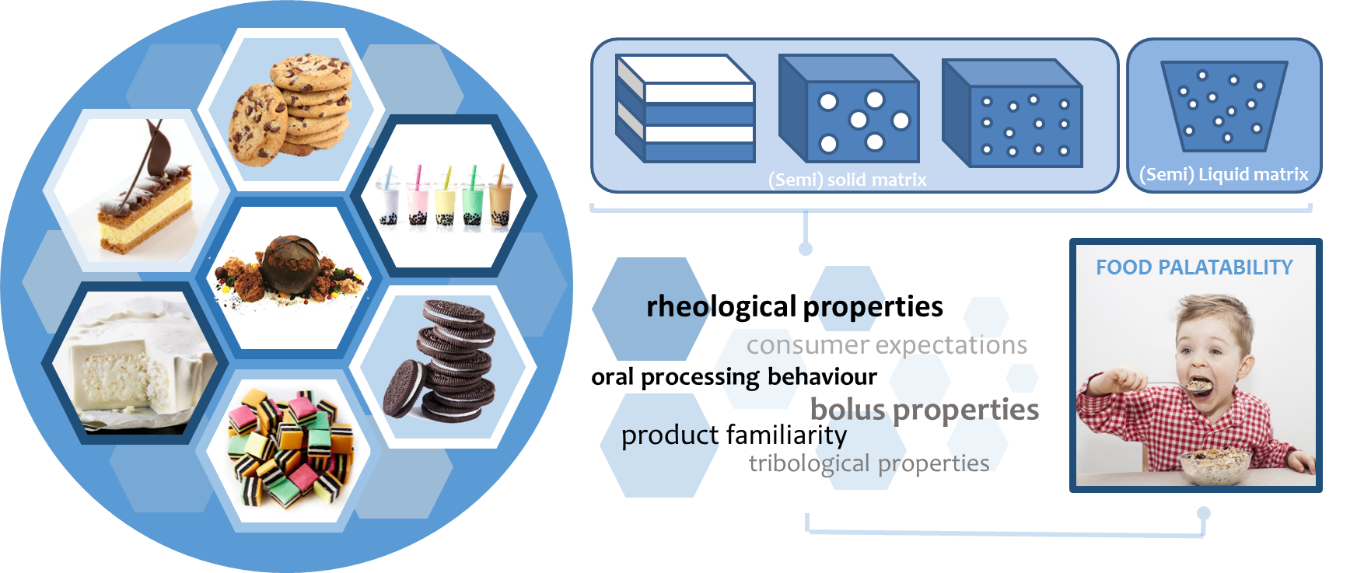Thesis subject
Food Texture Contrast
Introduction
Consumer acceptability and food palatability are greatly influenced by sensory perception. The sensory perception is a dynamic phenomenon depending on food properties and oral processing behaviour. It is known that foods with an inhomogeneous structure are often associated to liking and are scored highly positive on many sensory attributes (e.g. crispy biscuits with soft and creamy fillings). Multiple component or composite foods are characterized by different mechanical properties within a single bite and this texture contrast seems to be correlated to the enhanced palatability. Furthermore, consumer expectations and product familiarity directly affect human responses to the different properties of food.
This research aims to design foods with mechanical contrast at different length scales and investigate their effect on oral processing behaviour and expected and perceived sensory properties and liking. Different approaches will be used to engineer foods with structural heterogeneities in order to alter the mechanical contrast within several food matrices. Structural, rheological (mechanical) and tribological properties of the composite foods will be assessed to unveil its relation to perceived sensory attributes. Moreover, the link between oral processing behaviour, bolus properties and food heterogeneities will be investigated.

Research topics
- Preparation and characterization of foods with structure heterogeneities
- Investigate the role of mechanical contrast on sensory perception and liking
- Examine the effects of mechanical contrast on bolus properties and oral processing behaviour
Techniques
- Rheology (Rheometer, Texture Analyzer)
- Sensory
- Friction / Lubrication (Tribometer)
- Microscopy